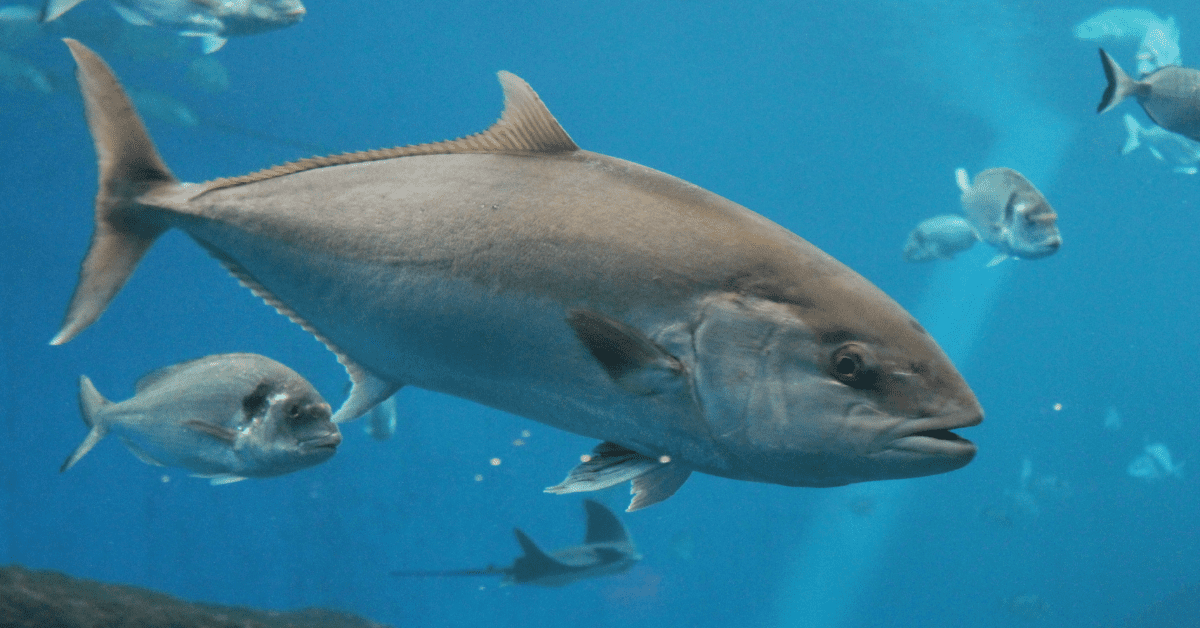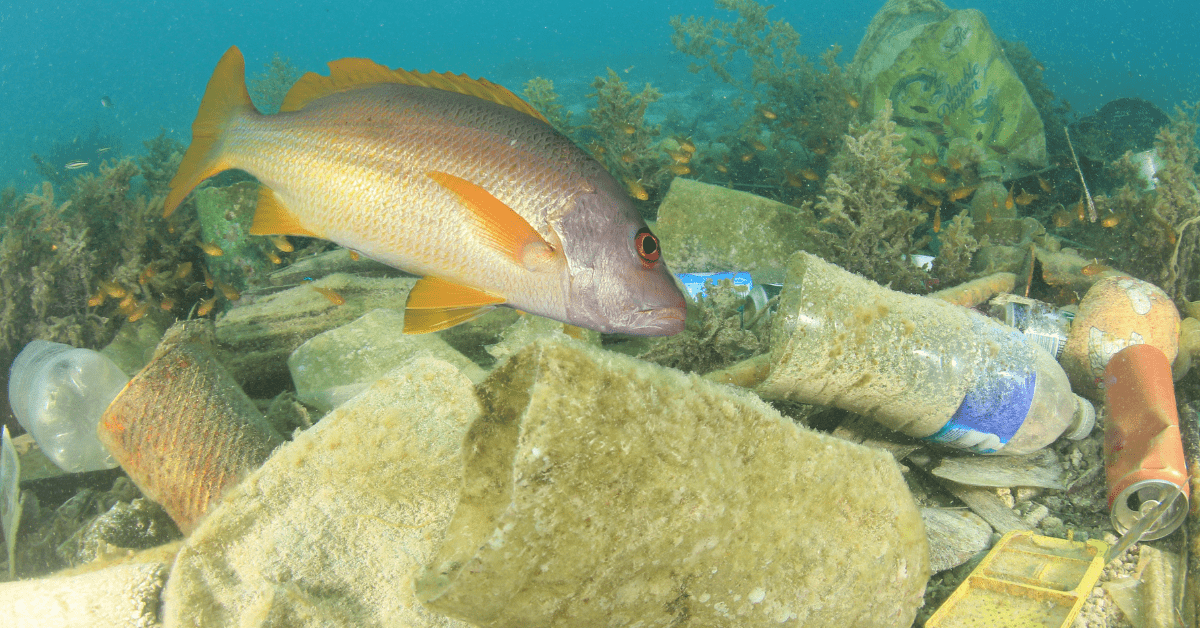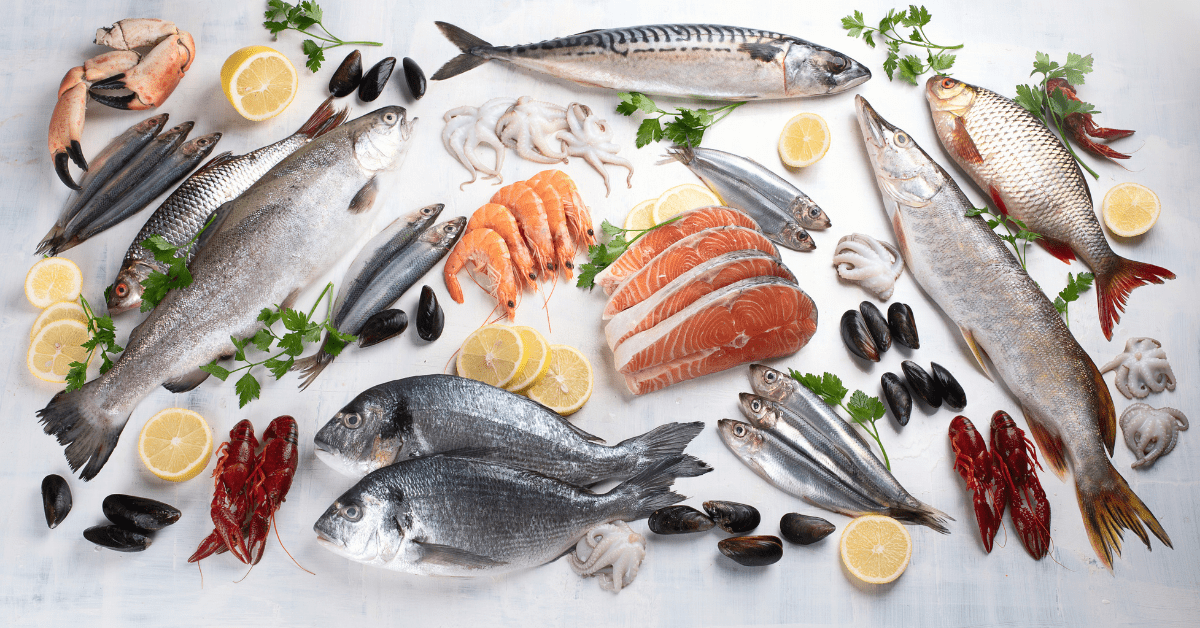There is no bigger catch-22, within the nutrition world than when it comes to seafood. Most people know there are health benefits to eating fish. But, could this be changing due to our oceans being polluted?
Seafood has many health benefits. In short, it is a lean protein, full of vital nutrients.
For instance, if you have lupus, science suggests that you eat 8 ounces of seafood each week. [1]
But our ocean is becoming fuller with waste from a western lifestyle. We are talking bottles, plastics, and toxic waste that washes down to our waterworks.
This is an issue that is getting worse and worse.
One that may in fact be contributing to ill health like autoimmune diseases. [2]
So, is fish still healthy if it lives in an unhealthy environment?
Can we still rely on seafood as a healthy food choice?

The Good
On one side, seafood provides energy, protein, and a range of other important nutrients. It is also one of the few sources of Vitamin D and Omega-3 fatty acids. [3]. Both of which contribute to many beneficial roles:
- Important for the healthy development of the nervous system and retina [4]
- Contributes to neurologic and psychological health throughout life [5]
- Protects against sudden cardiac death following a heart attack [6]
- Reduces inflammation and stabilises atherosclerosis i.e. hardening of the arteries [7]. Thus it is useful in treating chronic inflammatory diseases [8]
- Cuts the risk of coronary heart disease (CHD) mortality in adults [3]
- Lowers the risk of suboptimal neurodevelopment in the offspring of maternal women [3]

The Bad
On the other side of the coin, seafood possesses a hidden danger – the development of a chronic illness.
But how can that be? How can seafood be so beneficial, yet contribute to serious long-term consequences?
The answer to this is simple. Seafood contains lots of natural goodness. Yet, it is full of toxic chemicals, heavy metals, and parasites [3].
Parasites
There are a few that can infect humans and cause a chronic illness, or even tissue damage [3]. But, these are treatable with medication, after an adequate diagnosis.
Certain control measures will prevent this from happening in the first place:
- Inspect fish before purchasing or cooking
- Adequate cooking to kill the worms, if any
- Freeze, for at least 24 hours at or below -18 °C, if the product is to be eaten raw or lightly processed.
The Ugly
Heavy Metals
There are many metals that are toxic to humans. But when it comes to seafood contamination, it is cadmium and mercury that are of most concern.
This is due to high levels that occur from the earth’s crust. As well as pollution stemming from the improper disposal of waste after use in industry [3].
Cadmium
Cadmium has many industrial uses such as electroplating, paint, and batteries. Yet, cadmium can have some serious effects on human health through contaminated seafood. It has toxic effects on the respiratory system, the skeleton as well as the kidneys, and can cause cancer. Symptoms include extreme pain, respiratory distress, bone softening, and kidney damage [9].
It is important to know, that these toxic effects are a result of ingesting vast amounts. Many times higher than possible in an average diet. In reality, the seafood would have to of come from a place of massive pollution. In fact, tobacco smoking adds much higher amounts of cadmium to our life than seafood [3].
Mercury
Mercury, on the other hand, is a major concern. In the Earth’s crust, Mercury is in a ‘lifeless’ form. Yet, once it enters the aquatic environment it can change into a ‘living’ form. This is where it enters the aquatic food supply before ending up on our plates and into our brains [10].
To show the true effect mercury can have on human health, it is best to explain the outcome of two real-life events.
One occurred in Japan, where an industrial plant polluted the local food supply. The other event was a case of mercury-infected bread consumption in Iraq.
In both cases, affected individuals developed [3]:
- Abnormal reflexes
- Depression
- Hallucinations and confusion
- Impaired peripheral vision, hearing, taste, and smell
- Insomnia
- Irritability
- Loss of consciousness
- Memory loss
- Muscle weakness
- Paraplegia
- Prickling and tingling sensation in the extremities (paraesthesia)
- Restriction of visual fields or blindness
- Sleeping difficulties
- Slurred speech
- Spasticity
- Tremors
- Unsteady limbs and the inability to walk
It was not only affected adults that suffered. Unborn children, whose parents were affected when pregnant, were born with:
- Cerebral palsy
- Mental retardation
- Movement and coordination disorders
- Difficulty with speech
- Sensory impairments
Mercury is still a major concern for parents of a newborn. Not due to fish. But because mercury-based compounds have been, and still are, used to manufacture vaccines. Mercury is also used in dental fillings, putting many people in danger [11].
Toxic Chemicals
There are many toxic chemicals that are of concern.
In particular dioxins and those that are ‘dioxin-like.’ This is due to the deadly effects that these substances have on human health.
These include:
- Immunological alterations
- Reproductive toxicity
- Genotoxic effects
- Cancer
- Neurodevelopmental changes.
Plus, these can occur anywhere within the body. They can even pass on to later generations such as grandchildren [12].
The U.S. military even used dioxin chemicals in their tactical herbicide spray – Agent Orange [13]. The fact that this chemical agent kills trees and other vegetation display its toxicity.
But what’s more worrying is the fact that they can enter our food chain in different ways: air, soil, and water [3].
So, it is not only seafood that is of concern for us but all animal produce including dairy products and meat.
In particular animals with high-fat content. This is because dioxins are insoluble in water but soluble in oil. So human exposure varies from country to country.
| Country | Fish | Meat | Diary products | Eggs | Other foods |
| Australia | 39 | 11 | 31 | 2 | 8 |
| Denmark | 11 | 30 | 39 | 11 | 9 |
| Finland | 63 | 6 | 16 | 4 | 11 |
| France | 26 | 13 | 33 | 2 | 26 |
| Italy | 35 | 32 | 26 | 7 | – |
| Netherlands | 2 | 20 | 39 | 4 | 35 |
| New Zealand | 7 | 40 | 19 | – | 24 |
| Norway | 46 | 14 | 22 | 12 | 6 |
| Sweden | 34 | 31 | 19 | 2 | 14 |
| UK | 6 | 20 | 25 | 4 | 45 |
| USA | 7 | 53 | 35 | – | 3 |

So, Should we still eat Seafood?
It is clear that eating seafood like fish brings both benefits and risks. That is why experts recommend we use a risk-benefit analysis. In other words, compare the amount of Omega-3 fatty acids in food to the amount of mercury.
The best choices are the foods that contain a high amount of Omega-3 fatty acids, with a low level of mercury.
In general, it is best to avoid carnivorous predators such as swordfish, marlin, and tuna. Also, the larger, older individuals have the highest levels.
Small, vegetarian fish seem to be the better choice. This rule is true for both fresh water and marine fish. The image below gives a better idea.

Final Thoughts
A fair conclusion is to limit seafood intake to two servings per week.
Choosing only small, oily fish such as sardines and anchovies.
That said I already believe we eat too much meat as it is within the Western World.
What dioxins do is further support the idea to include a few meat-free days into the diet each week.
But always supplement Vitamin D3 and Omega-3 to counteract not eating fish every day. The truth is that there are many health benefits from eating fish. It is a shame that our toxic behaviours are poisoning our waterworks. Therefore, infecting its inhabitants such as fish.
Bushkin-Bedient and Carpenter said it best in their research paper on this matter.
“The real advice is to use common sense. A fish that is not contaminated is a healthy food, but a contaminated fish can be very dangerous. Eat a balanced diet. Moderation in all things is the best bet.” [9]
If you liked this, please share, comment, and check out my other articles.
Copyright, Lupus to Health. May not be reprinted without permission.
Read this next: Are Antioxidants good for lupus?
Pingback: Dust And Lupus: The Real Risk You Didn't Know -
Pingback: 5 Top Tips To Make Every Meal Kidney Friendly -
Pingback: A Quick-Lesson on the dates on Food Labels -